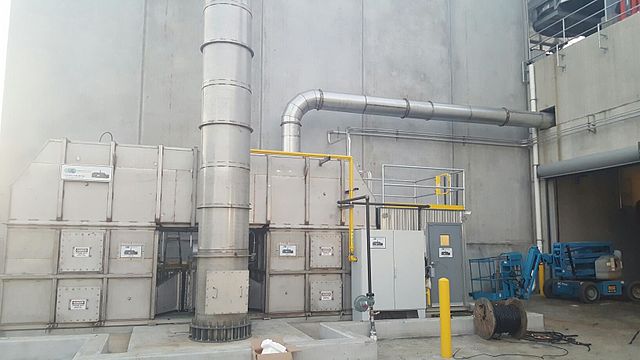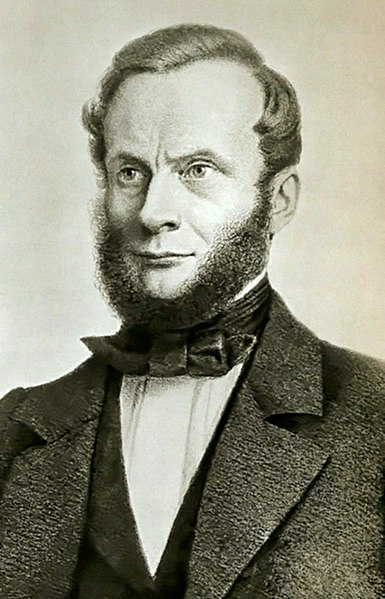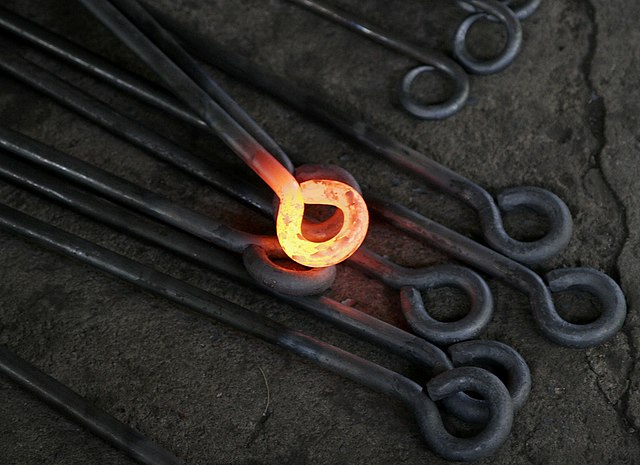Waste heat is heat that is produced by a machine, or other process that uses energy, as a byproduct of doing work. All such processes give off some waste heat as a fundamental result of the laws of thermodynamics. Waste heat has lower utility than the original energy source. Sources of waste heat include all manner of human activities, natural systems, and all organisms, for example, incandescent light bulbs get hot, a refrigerator warms the room air, a building gets hot during peak hours, an internal combustion engine generates high-temperature exhaust gases, and electronic components get warm when in operation.
Thermal oxidizers can use a regenerative process for waste heat from industrial systems.
Air conditioning units extract heat from a dwelling interior with coolant, and transfer it to the dwelling exterior as waste. They emit additional heat in their use of electricity to power the devices that pass heat to and from the coolant.
Cooling towers evaporating water at Ratcliffe-on-Soar Power Station, United Kingdom
In thermodynamics, heat is the thermal energy transferred between systems due to a temperature difference. In colloquial use, heat sometimes refers to thermal energy itself. Thermal energy is the kinetic energy of vibrating and colliding atoms in a substance.
A glowing-hot metal bar showing incandescence, the emission of light due to its temperature, is often recognized as a source of heat
Rudolf Clausius
A red-hot iron rod from which heat transfer to the surrounding environment will be primarily through radiation.
Joseph Black







